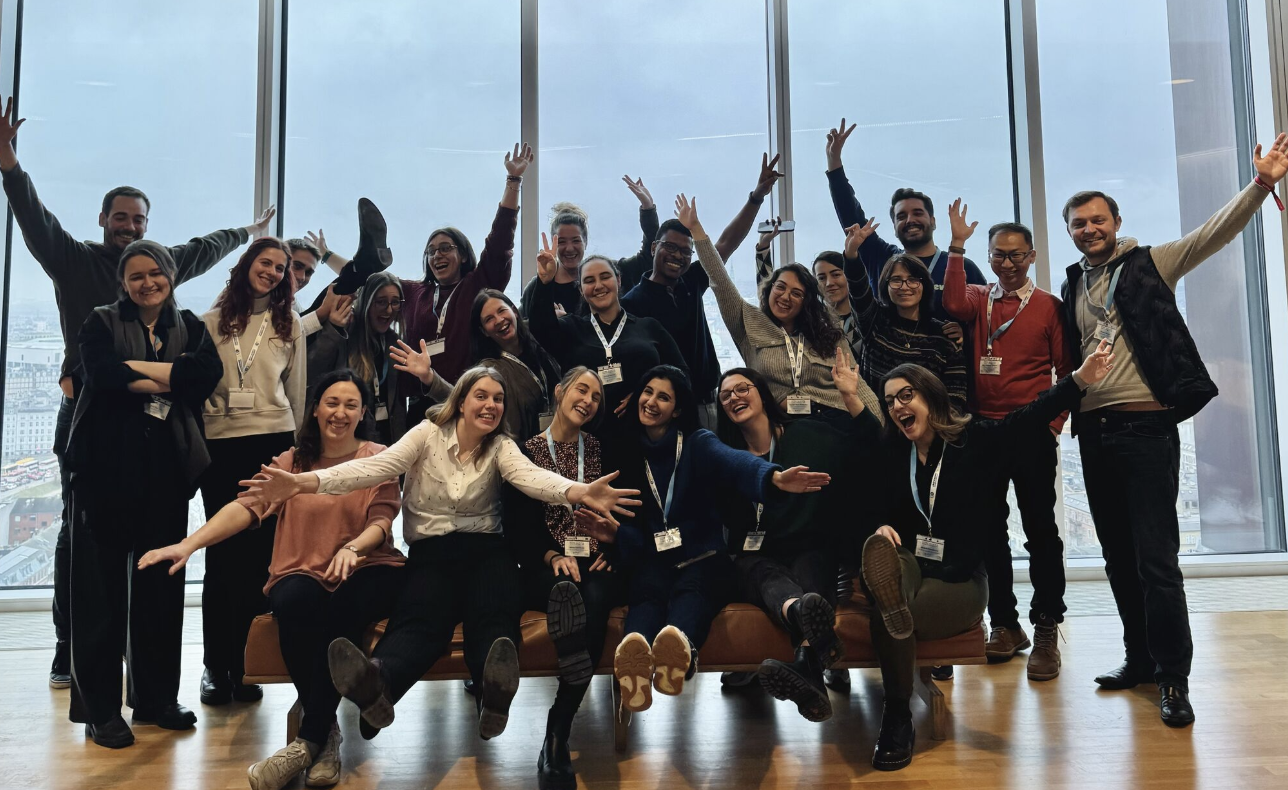In February 2025, NYRA, in collaboration with the European Academy of Andrology (EAA) and ANDRONET, hosted its first School on Transcriptomics and Male Germ Cells at the Maersk Tower, University of Copenhagen. This initiative aimed to equip early-career researchers with practical skills to tackle one of the most complex challenges in reproductive biology: understanding the testis at the transcriptomic level.
Why Transcriptomics?
The testis is a highly complex organ, producing both hormones and sperm, and is composed of diverse, specialised cell types. Analysing gene expression in such a heterogeneous tissue requires advanced methods like bulk RNA-seq and single-cell RNA-seq (scRNA-seq) to disentangle cell-type-specific signals.
However, applying these techniques requires both technical knowledge and bioinformatic skills—areas where young researchers often lack structured training. The NYRA School was designed to bridge this gap, offering a hands-on learning environment focused on transcriptomic data analysis applied specifically to male germ cell biology.
What We Did
The School spanned five days, blending theory and practice across:
- Introductory lectures on transcriptomics
- Bulk RNA-seq analysis workflows, from QC to differential expression and data visualisation
- scRNA-seq analysis, including clustering, marker gene identification, and trajectory analysis
- Discussions on data interpretation and challenges in testis research
The 14 participants, including PhD students, postdocs, and a clinical andrologist, came from across Europe and Indonesia, reflecting NYRA’s commitment to global, interdisciplinary learning.
What Participants Gain
Knowledge Boost
- Participants with no prior experience in transcriptomics reported a 4–5 point improvement in their self-assessed skills in both bulk and single-cell RNA-seq analysis.
- Notably, 78% had no prior scRNA-seq experience, yet all left confident in applying these methods to their own research.
Applied Skills
- Participants learned to produce publication-ready figures (e.g., heatmaps, volcano plots), interpret biological meaning from large datasets, and gained confidence in troubleshooting analyses.
Community Building
- The in-person format facilitated direct interaction with trainers and peers, fostering new collaborations and strengthening the NYRA network in andrology.
What’s Next?
Feedback highlighted the value of the course, with 100% recommending it to peers and 86% describing themselves as “very satisfied.” Suggestions included offering more challenging pre-course materials and potentially splitting future schools into dedicated bulk RNA-seq and scRNA-seq editions to deepen learning.
NYRA remains committed to empowering early-career researchers by providing cutting-edge training aligned with the rapid evolution of transcriptomic technologies, ensuring young scientists are ready to advance reproductive health research with confidence.
Thank You
This school was made possible thanks to the dedication of NYRA’s organising team, the support of EAA and ANDRONET, and the engaged participation of attendees. We also acknowledge support from COST Action 20119 ANDRONET, fostering collaborative research networks across Europe.
Stay tuned for future NYRA Schools, where we continue to build expertise, confidence, and community in the next generation of reproductive scientists.

